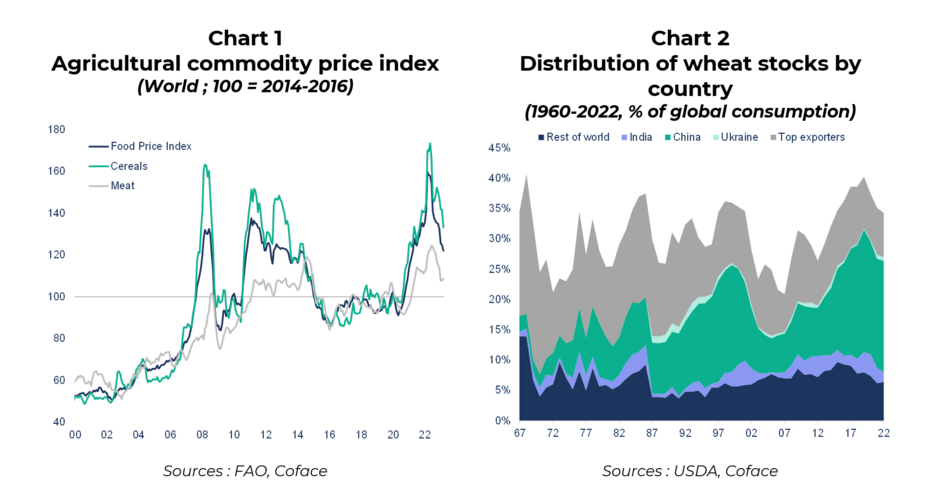While the global economic outlook remains uncertain and closely linked to inflation trends and central bank monetary policy decisions, our concerns about agricultural commodities were reinforced in Q2 2023.
Food prices remain high
High production costs, trade tensions and increased weather risks will continue to weigh on global agricultural production in the months ahead.
Although food prices have declined since mid-2022, they remain high by historical standards (Chart 1). Several countries, led by India, have announced that they will maintain during the second half of the year the restrictions on food exports introduced in response to high prices almost a year ago. These measures will continue to constrain international trade at a time when cereal stocks are highly concentrated. For example, China currently holds over 50% of the world's wheat stocks (Chart 2).


Agricultural commodities remain at the centre of the geopolitical game
Grain supplies are a key part of Vladimir Putin's coercive strategy and this lever, formalised by the creation of a maritime corridor in the Black Sea, should last as long as the conflict. The agreement, which is very fragile since it is extended every two months, confirms the pressure on global cereal supply chains in the medium term.
Finally, the increasing frequency of climatic and meteorological anomalies will only increase the volatility of agricultural commodity prices. In the northern hemisphere, the current early periods of intense heat and the significant water deficit will affect cereal yields (wheat, corn) until the end of the year. Furthermore, the almost certain occurrence (>90%) of an El Niño episode from Q3 2023 will add to the existing tensions. Synonymous with warmer, drier-than-normal weather in the Indo-Pacific, it will exacerbate the underlying effects of climate change. In concrete terms, the production of several agricultural commodities (sugar, palm oil, cereals) will be affected from the end of 2023.
Against this backdrop, the prices of agricultural commodities are already on the rise, as it is the case for sugar, wheat, corn and cocoa. Sugar is a good indicator of future trends, as it combines all the current risks: it is subject to export restrictions by major producers, while Brent crude oil prices are supporting demand for sugar to produce bioethanol. In addition, weather forecasts are increasing uncertainty about production levels in 2023 for the world's biggest producers (Brazil, India and the EU).
